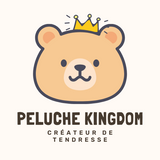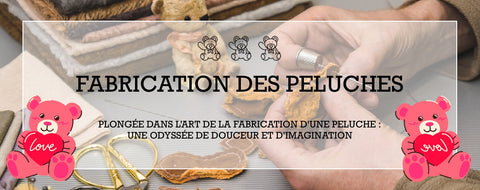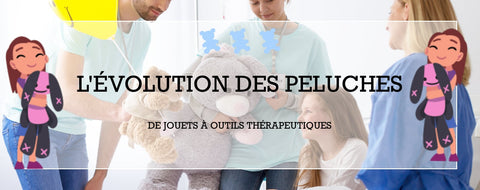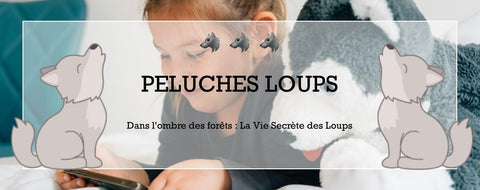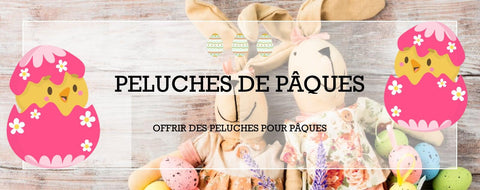
From what age can your baby sleep with a stuffed animal or a cuddly toy?
of reading - words
Now that your baby loves his blanket, you may be wondering what the safety rules are for sleeping 💤 for a child his age. The majority of first-time birth parents worry about letting their baby sleep with stuffed animals in their crib! Letting a baby keep their stuffed animal next to them while they sleep can be a risky move.
However, as the baby grows and ages, having stuffed toys for your child is a great way to comfort them 😊 and help them sleep better.
These days, it's becoming more and more common for parents to buy stuffed animals 🧸 to help their babies sleep. However, the question still arises: at what age can my baby sleep with a stuffed animal? It is well known that young children, especially babies, do not sleep very well. This may upset them. Luckily, having a stuffed baby around to comfort him can help ease his distress. Here's what you need to know to get your little one to sleep safely.
1) Why let a Baby Sleep with a Stuffed Animal?
Sleeping with a stuffed animal can help your baby sleep better . However, this is only relevant when your baby is old enough 🎒 to have a stuffed animal to sleep with.
Sudden Infant Death Syndrome (SIDS) is a very real risk for babies who have stuffed animals in their beds 🛌 while they sleep. Indeed, it is said that the rate of SIDS has doubled since the beginning of the century!

As a result, young babies 🍼 should not be given sleep toys due to the associated risks. Only older babies should be given safe bed toys to help them relax. But when will they reach that age?
2) When can Babies Sleep with their Doudou?
A- When babies can walk
These days, most people seem to think that the ideal age to give a baby their first teddy bear or stuffed animal to sleep on is when they can move around on their own 🤸♀️ . The underlying logic is that a baby who is able to roll over or, ideally, sit up on his own, will not be at such a high risk of SIDS (sudden infant death syndrome).

Most babies will reach this stage around the age of one. So don't let your baby sleep with soft objects until he is at least 12 months old 👶 . According to the American Academy of Pediatrics, pillow toys, blankets, comforters, bed bumpers and other bedding items increase the risk of sudden infant death syndrome (SIDS) and death from suffocation or strangulation.
Although it may seem unlikely, it is possible for a doll or stuffed animal to cover your baby's face and suffocate her. And sadly, these tragedies are on the rise: in 2010, over 600 infants died because they were accidentally suffocated or strangled in bed, and the rate has more than doubled since 2000.

The actual number could be even higher as stuffed toys and bedding may also play a role in some of the more than 2,000 SIDS-related deaths 💀 (sudden infant death syndrome) each year.
B- Clutter your baby's cradle as little as possible
The safest solution is not to clutter your baby's bed , especially with stuffed toys 🐰 and accessories.

After your baby's first birthday, the risk of SIDS drops significantly. The likelihood of choking also decreases because most 12-month-olds are able to roll over, sit up, and push objects away from their face. Nevertheless, many experts suggest that parents wait until at least their child's second birthday 🎂 before introducing soft materials, such as stuffed animals, into their child's sleep space.
So your baby can bring a special toy or blanket to bed to comfort them, but it's safer to keep their crib relatively empty ✨, so don't give your child a pillow until they've moved from crib to bed. bed.

In summary: once your baby can move around on his own , you can consider giving him a stuffed animal 🎁. But if he can't do that, you shouldn't give him a toy to sleep on. Indeed, you risk putting him in danger of sudden infant death syndrome by giving him a stuffed animal or down pillows when he is too young!
3) What to do once your baby can sleep with his stuffed animal?
When your child is a toddler (between 1 and 3 years old), they are no longer at risk for SIDS and many rules about baby sleep safety no longer apply. That said, there are still some important things to consider to ensure your child's safety ✅ while they sleep :

- Your child should start changing beds when they are old enough. You should start switching to a toddler bed or a twin bed with a side rail when your child reaches a height of around 120 cm or when the height of the side rail is less than three quarters of his height. Ideally, you should transition when he's as close to 3 years of age as possible. Most children spend in a crib between 18 months and 3.5 years, although the youngest are not really ready for a big bed. If he seems happy 😃 in his crib and he doesn't often try to get out of it, it is perfectly safe for your child to continue sleeping there until he has reached the height of 120 cm. then it's time to put him in a bed.

- Create a safe sleeping space . Make sure that your child's bed is away from any object with ties or strings, such as blind pulls, curtains or electrical cords; likewise, watch out for objects your child might pull into bed, such as picture frames, mobiles, or other hazards ❌. The good news: blankets, pillows, and stuffed animals no longer pose the risk they did when your child was a baby. Today, it's normal for your child to sleep with a thin blanket and a small pillow, but make sure the pillow isn't big enough for him to use as a makeshift stepladder to climb out of. his cradle. And it's always good to stay away from large stuffed animals or soft toys.

- Take steps to protect people who climb into the crib. Toddlers love to move around and explore their surroundings, which may mean trying to climb out of their crib 🧗♂️. If your child is still in his crib, adjust his mattress to the lowest possible position to make it more difficult for him to get out. And avoid putting things in the crib that your child could step on to help them get out, like stuffed toys or bumpers. Even if these precautions are taken, your child will still be able to get out of his crib. If so, and he does it frequently, it's probably time to put him in a toddler bed or a twin bed with a side rail.
- Let your child sleep in a position that is comfortable for them 💫 . After their first birthday, you should no longer put your child on their back. He's big enough to safely sleep on his back, stomach or side - so let him stick to whatever position he chooses.

4) Choose a soft toy your baby will sleep with
A stuffed animal could help your child sleep better. However, to be on the safe side, parents should choose an appropriate toy 🐻 that their child can cuddle with while sleeping once your child is old enough to have a stuffed animal in their crib (after the age of one).
Then you need to choose one with its safety in mind. When buying a plush toy for your child, it's important to choose a small and soft stuffed animal 🍃 for bedtime. As your child grows, large soft toys could be used as a stepping stone to help them get out of their crib. Ouch!

Plus, it's easy to choose a safe plush toy for your child. To do this, you just have to take a few simple factors into account such as the size of the plush, its composition 🏭, that it does not have buttons, ribbons, hard eyes and other removable parts...
To be sure not to offer your young child a soft toy that can be dangerous for him, we advise you to consult 👀 the ultimate guide to choosing a safe soft toy for your baby .

You can also find safe stuffed animals and cuddly toys ☑ for your child in our shop (as long as you don't let him sleep with them before he has passed his first 12 months).
And, as your baby grows, sleep becomes more secure and guidelines begin to relax. So keep calm ! You more than deserved it 😌.
